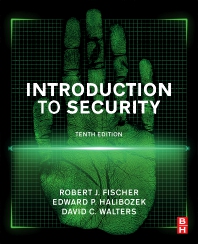From City Hall to the Courthouse to Postal Stations — White Powder Threat Continues to Gain Steam
Anger, extreme politics, lopsided revenge. Whatever the cause, city, state, law enforcement and federal facilities now face a growing number of incidents of white powdery substances mailed to or left at the buildings.
It doesn’t only happen in the biggest cities. Police and the FBI have responded to at least a dozen “white powder” cases in Boise, Idaho since 2003, with the most recent occurring at the U.S. attorney’s office this past spring. Neither Boise police nor the FBI could say how many arrests have been made in connection with these crimes, though they did confirm there had been no arrests in the last two years.
It doesn’t only happen in the biggest cities. Police and the FBI have responded to at least a dozen “white powder” cases in Boise, Idaho since 2003, with the most recent occurring at the U.S. attorney’s office this past spring. Neither Boise police nor the FBI could say how many arrests have been made in connection with these crimes, though they did confirm there had been no arrests in the last two years.
There have been some hoax case convictions this year in other parts of the country. Reports nationwide tapered off significantly after 2002 but have recently increased. Investigators have found there is a flurry of these cases after “key political and public events.” Typical targets include elected officials, government organizations and the media. Government building security executives and law enforcement officials must treat every case as a serious threat. The hoaxes sap local and federal law enforcement, diverting them from investigations and other real emergencies.
Sometimes, however, even the best plans go astray. For example, earlier this year a supervisor with the Capitol Visitor Center (CVC) in Washington D.C. flushed a white powder from a plastic bag labeled “Anthrax” down a toilet at the Capitol while hundreds of tourists milled around nearby. After being notified by a visitor assistant that the powder-filled bag was in the CVC’s Exhibition Hall, an operational supervisor allegedly retrieved a pair of plastic gloves and brought it to a nearby bathroom and flushed its contents down a toilet. About an hour later, Capitol Police were notified. The hazardous devices unit found no traces of harmful biological components, such as anthrax spores, during an inspection. Similar to called-in bomb threats, government receptionists and security officers have procedures to follow, including calling in hazardous materials personnel.
Beyond anthrax threats, often city and state building security executives increase protection based on specific incidents or assessments. For instance, security at the Louisiana Capitol in Baton Rouge further tightened access to the building after the house speaker and senate president decided to beef up security because they felt previous security measures had been “extraordinarily lax.” The public now can only walk into the building from the main entrance and two side entrances. Other side doors and entrances at the back of the building are restricted to those who work in the building. Anyone without a security badge for the building also must walk through a metal detector and have purses, briefcases and bags run through an x-ray scanner.
In Texas, concerns were raised at the state capitol after police said a 24-year-old walked into a state senator’s office with a loaded gun. He was escorted from the building, but later fired several shots outside. And a suspect’s drug trial at the federal courthouse in downtown Des Moines recently prompted officials to tighten security at the building.
Looking for a reprint of this article?
From high-res PDFs to custom plaques, order your copy today!





